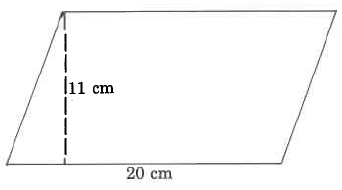11.4: Solving Equations of the Form ax = b and x/a = b
( \newcommand{\kernel}{\mathrm{null}\,}\)
- be familiar with the multiplication/division property of equality
- be able to solve equations of the form
- be able to use combined techniques to solve equations
Multiplication/ Division Property of Equality
Recall that the equal sign of an equation indicates that the number represented by the expression on the left side is the same as the number represented by the expression on the right side. From this, we can suggest the multiplication/division property of equality.
Multiplication/Division Property of Equality
Given any equation,
- We can obtain an equivalent equation by multiplying both sides of the equation by the same nonzero number, that is, if
- We can obtain an equivalent equation by dividing both sides of the equation by the same nonzero number, that is, if
The multiplication/division property of equality can be used to undo an association with a number that multiplies or divides the variable.
Use the multiplication / division property of equality to solve each equation.
Solution
6 is associated with y by multiplication. Undo the association by dividing both sides by 6
Check: When
becomes
a true statement.
The solution to
Solution
-2 is associated with
Check: When
becomes

a true statement.
The solution to
Solution
We will examine two methods for solving equations such as this one.
Method 1: Use of dividing out common factors.
7 is associated with
Divide out the 7's
3 is associated with
Check: When
becomes

a true statement.
The solution to
Method 2: Use of reciprocals
Recall that if the product of two numbers is 1, the numbers are reciprocals. Thus
Multiply both sides of the equation by
Notice that we get the same solution using either method.
Solution
-8 is associated with
Check: When
becomes
a true statement.
Solution
Since
Check: When
becomes
The solution to
Practice Set A
Use the multiplication/division property of equality to solve each equation. Be sure to check each solution.
- Answer
-
Practice Set A
- Answer
-
Practice Set A
- Answer
-
Practice Set A
- Answer
-
Practice Set A
- Answer
-
Practice Set A
- Answer
-
Combining Techniques in Equation Solving
Having examined solving equations using the addition/subtraction and the multiplication/division principles of equality, we can combine these techniques to solve more complicated equations.
When beginning to solve an equation such as
To associate numbers and letters, we use the order of operations.
- Multiply/divide
- Add/subtract
To undo an association between numbers and letters, we use the order of operations in reverse.
- Add/subtract
- Multiply/divide
Solve each equation. (In these example problems, we will not show the checks.)
Solution
-4 is associated with xx by subtraction. Undo the association by adding 4 to both sides.
6 is associated with
Solution
3 is associated with
-8 is associated with
Solution
Begin by solving this equation by combining like terms.
Subtract m from both sides.
8 is associated with m by subtraction. Undo the association by adding 8 to both sides.
6 is associated with m by multiplication. Undo the association by dividing both sides by 6.
Notice that if we had chosen to isolate m on the left side of the equation rather than the right side, we would have proceeded as follows:
Subtract
Add 6 to both sides,
Divide both sides by -6.
This is the same result as with the previous approach.
Solution
7 is associated with
8 is associated with
Practice Set B
Solve each equation. Be sure to check each solution.
- Answer
-
Practice Set B
- Answer
-
Practice Set B
- Answer
-
Practice Set B
- Answer
-
Practice Set B
- Answer
-
Practice Set B
- Answer
-
Exercises
Solve each equation. Be sure to check each result.
Exercise
- Answer
-
Exercise
Exercise
- Answer
-
Exercise
Exercise
- Answer
-
Exercise
Exercise
- Answer
-
Exercise
Exercise
- Answer
-
Exercise
Exercise
- Answer
-
Exercise
Exercise
- Answer
-
Exercise
Exercise
- Answer
-
Exercise
Exercise
- Answer
-
Exercise
Exercise
- Answer
-
Exercise
Exercise
- Answer
-
Exercise
Exercise
- Answer
-
Exercise
Exercise
- Answer
-
\(a = -\dfrac{5}{4})
Exercise
Exercise
- Answer
-
Exercise
Exercise
- Answer
-
Exercise
Exercise
- Answer
-
Exercise
Exercise
- Answer
-
Exercise
Exercise
- Answer
-
Exercise
Exercises for Review
Exercise
Use the distributive property to compute
- Answer
-
Exercise
Approximating

Exercise
Find the area of the parallelogram.

- Answer
-
220 sq cm
Exercise
Find the value of
Exercise
Solve the equation
- Answer
-


